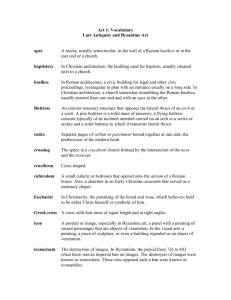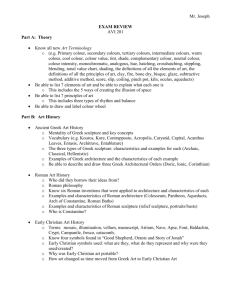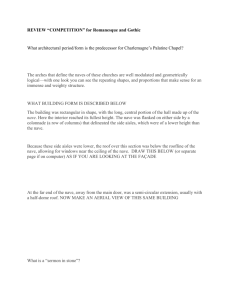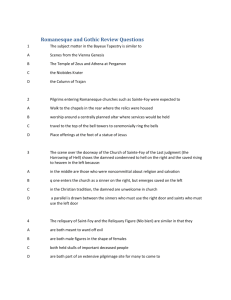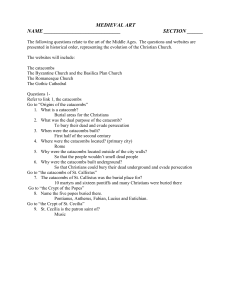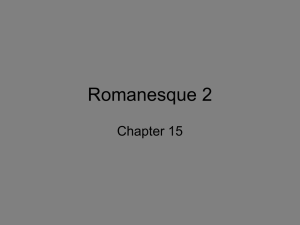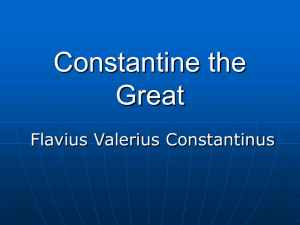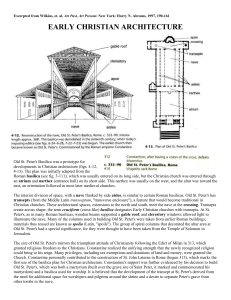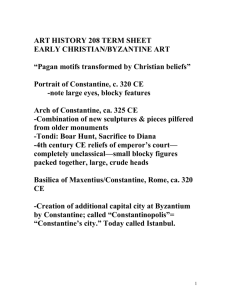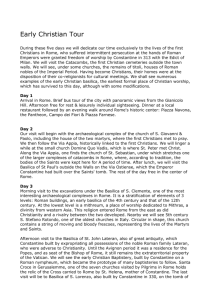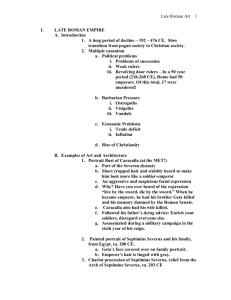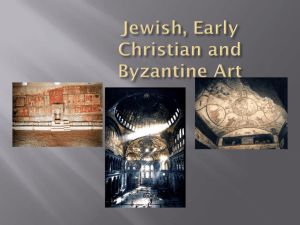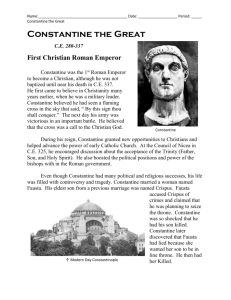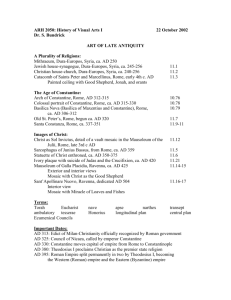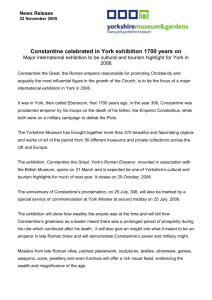Roman_to_Gothic
advertisement
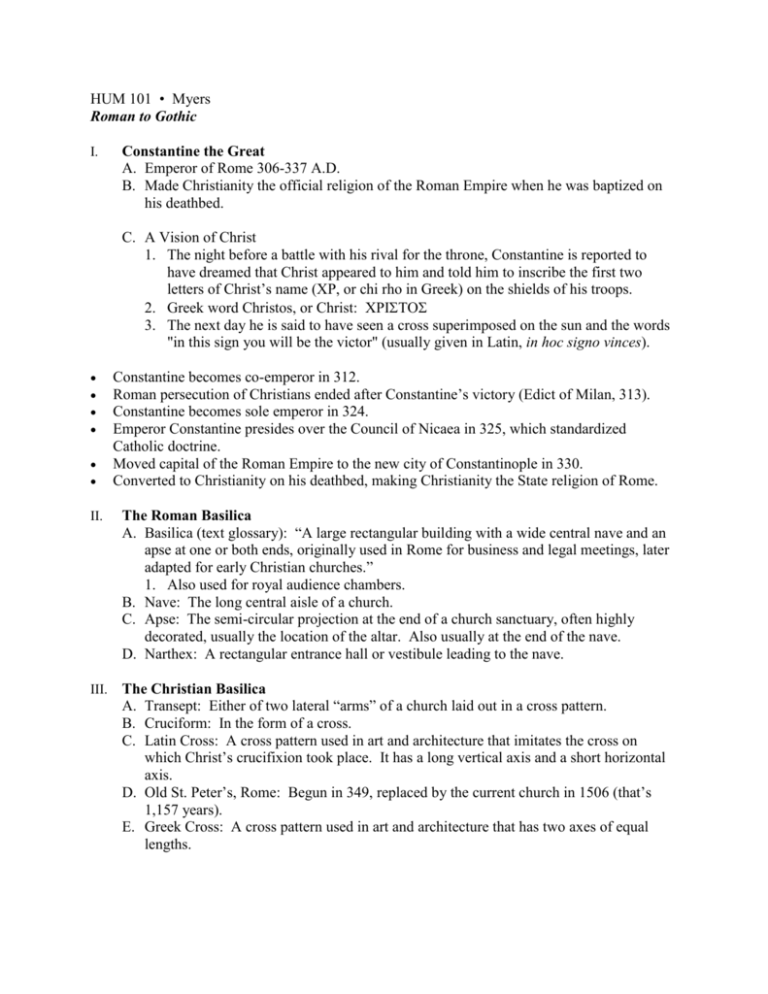
HUM 101 • Myers Roman to Gothic I. Constantine the Great A. Emperor of Rome 306-337 A.D. B. Made Christianity the official religion of the Roman Empire when he was baptized on his deathbed. C. A Vision of Christ 1. The night before a battle with his rival for the throne, Constantine is reported to have dreamed that Christ appeared to him and told him to inscribe the first two letters of Christ’s name (XP, or chi rho in Greek) on the shields of his troops. 2. Greek word Christos, or Christ: 3. The next day he is said to have seen a cross superimposed on the sun and the words "in this sign you will be the victor" (usually given in Latin, in hoc signo vinces). Constantine becomes co-emperor in 312. Roman persecution of Christians ended after Constantine’s victory (Edict of Milan, 313). Constantine becomes sole emperor in 324. Emperor Constantine presides over the Council of Nicaea in 325, which standardized Catholic doctrine. Moved capital of the Roman Empire to the new city of Constantinople in 330. Converted to Christianity on his deathbed, making Christianity the State religion of Rome. II. The Roman Basilica A. Basilica (text glossary): “A large rectangular building with a wide central nave and an apse at one or both ends, originally used in Rome for business and legal meetings, later adapted for early Christian churches.” 1. Also used for royal audience chambers. B. Nave: The long central aisle of a church. C. Apse: The semi-circular projection at the end of a church sanctuary, often highly decorated, usually the location of the altar. Also usually at the end of the nave. D. Narthex: A rectangular entrance hall or vestibule leading to the nave. III. The Christian Basilica A. Transept: Either of two lateral “arms” of a church laid out in a cross pattern. B. Cruciform: In the form of a cross. C. Latin Cross: A cross pattern used in art and architecture that imitates the cross on which Christ’s crucifixion took place. It has a long vertical axis and a short horizontal axis. D. Old St. Peter’s, Rome: Begun in 349, replaced by the current church in 1506 (that’s 1,157 years). E. Greek Cross: A cross pattern used in art and architecture that has two axes of equal lengths. F. Church of Hagia Sophia (Holy Wisdom), Istanbul, Turkey G. St. Peter’s, Rome: Style: Baroque, but retains Romanesque characteristics. IV. Tabernacle: In the Old Testament, tent established by Moses in which the Ark of the Covenant was conveyed. V. Romanesque Architecture A. Round Roman arch. B. Barrel vault, groin vault, dome. C. Basilica plan: nave and transept. D. Cruciform plan: Latin cross or Greek cross. E. All stone, supported by massive stone piers and thick walls. VI. Gothic Architecture A. B. C. D. Pointed arch. Extremely complicated vault systems using the rib vault. Cruciform plan: usually a Latin cross. All stone, supported by lighter stone supports, thinner walls with more windows, and flying buttresses. E. Gothic: Derogatory term used by Renaissance Italians for the architectural style that developed in France during the 12th and 13th centuries. Referred to the notorious Northern European barbarian tribe, the Goths. The Italians preferred classical architecture to that which developed in Europe during what they called the “dark ages.” F. Key difference: While Romanesque church design emphasized mass, Gothic design emphasized height. G. Pointed Arch: The basic unit of construction for Gothic churches.
